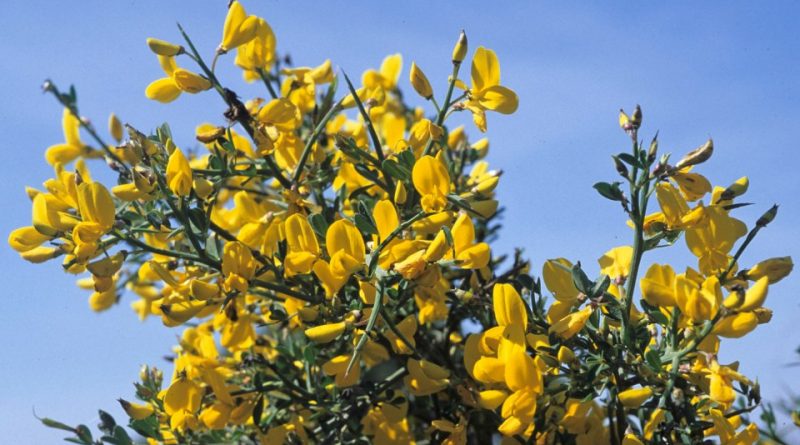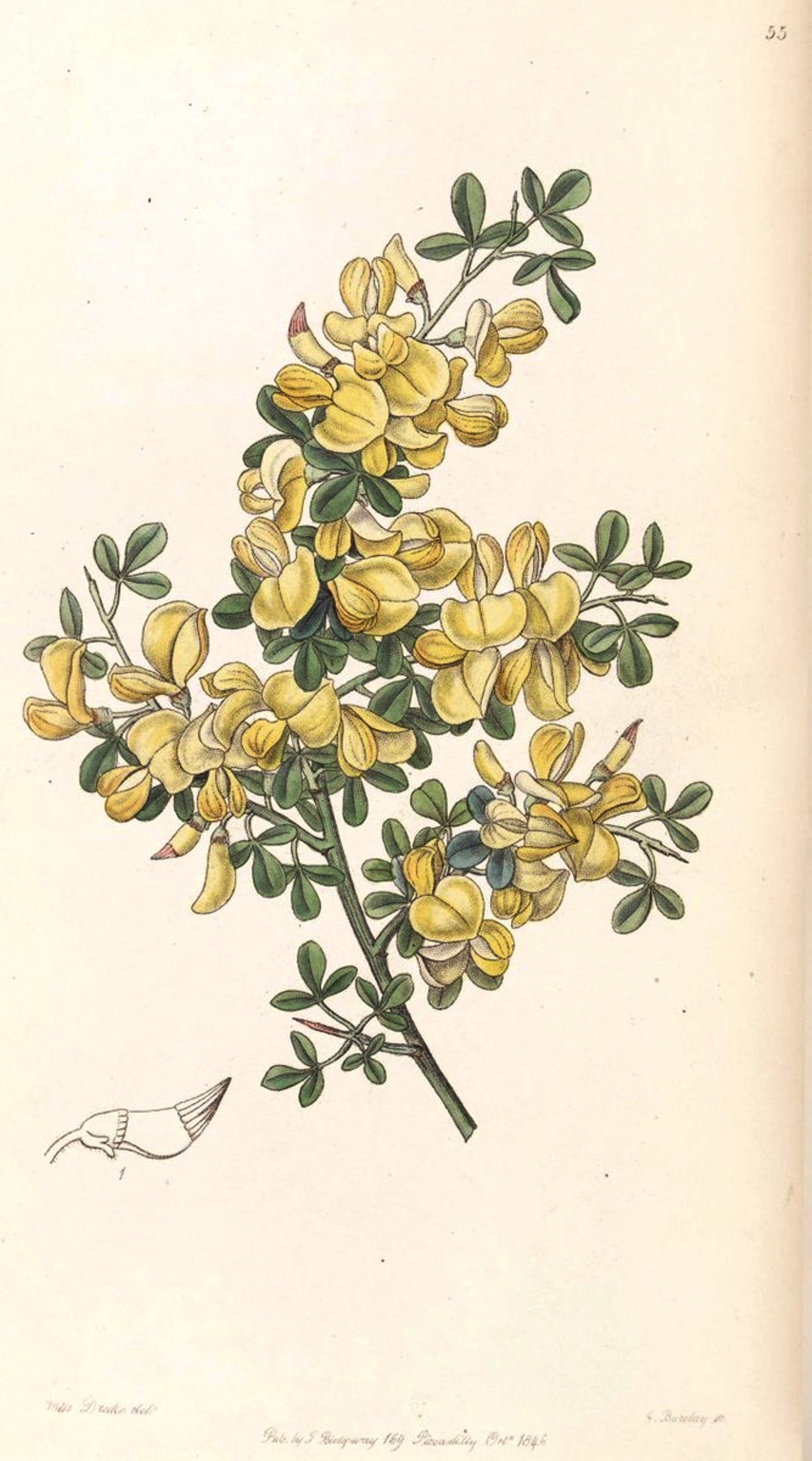Calicotome spinosa
Calicotome spinosa
The Spiny Broom (Calicotome spinosa (L.) Link) is a shrub species of the Fabaceae family.
Systematics –
From the systematic point of view it belongs to the Eukaryota Domain, United Plantae, Magnoliophyta Division, Magnoliopsida Class, Fabales Order, Fabaceae Family, Faboideae Subfamily, Tribe Genisteae and then to the Calicotome Genus and to the C. spinosa Species.
The terms are synonymous: Spartium spinosum L., Cytisus spinosus (L.) Lam. and Calicotome spinosa subsp. ligustica Rouy.
Etymology –
The term Calicotome comes from the Greek κάλυξ, υκοϛ cályx, -ykos calyx, casing and τομή tomé section, cut: cut calyx, reference to the calyx which is divided in two to the anthesis. The specific spiny epithet derives from spina spina: thorny, covered with thorns.
Geographical Distribution and Habitat –
The Spiny Broom is a Steno-Mediterranean species, heliophilous and xerophilous, which grows from the sea level to the inland areas with a hot-dry climate.
It is found in the garrigue formations, in the stains degraded by fires, in rocky and sunny places on acid soil.
This species tends to form (alone or with other species) dense and impenetrable spots and protects the soils from erosion, favoring the accumulation of organic substance it helps to establish suitable environmental conditions for the establishment of more evolved plant associations.
It is widespread in the western part of the Mediterranean basin (Spain, France, Italy and Algeria), where it grows from sea level up to 600 – 800 m. s.l.m .. It is also present, as a species introduced by man, in New Zealand.
Description –
Calicotome spinosa is a shrubby species that can reach 2 meters in height, with intricate and thorny branches.
The leaves are deciduous, trifoliate with oblong oval leaflets. In summer the leaves fall.
The flowers are yellow isolated or in groups of two, with a bell-shaped calyx.
The anthesis is between May and June.
The fruits come in the form of linear, dehiscent, linear-oblong legumes of 21-30 (52) x 5-6 (8) mm, smoothed, glabrous, smooth, blackish-brown, pruinose, with 2 wings of 1-3 mm in the ventral suture and with 2-9 seeds of 2.9-3.6 x 2.5-3.4 mm, reniform, appianate, brown-greenish.
Cultivation –
The Spiny Broom is a plant that while quietly withstanding drought, to have a continuous flowering it is advisable to water regularly but waiting for the soil to dry perfectly between two shifts. Being a Mediterranean species, it fears intense cold, even more than the other brooms, so, if it must be grown in unsuitable environments, it must be placed under protection.
For the cultivation it is necessary to choose a porous and sandy soil, completely devoid of water stagnation, which can quickly cause the death of the plants and very sunny positions.
It is a very suitable species to form compact hedges that give an excellent intense yellow color to the whole hedge in the period starting in May and throughout the summer. They are plants suitable for Mediterranean rock gardens.
Uses and Traditions –
Calicotome spinosa is a broom typical of the Mediterranean maquis, slightly more delicate than the others, as far as winter temperatures are concerned. It produces thin green stems, very branched and disordered, and produce large shrubs, which can reach a few meters in height; they prefer sunny positions and do not fear drought, even if prolonged. They are plants suitable for Mediterranean rock gardens with flowers that bloom throughout the summer, gathered in racemes. Due to the density and richness of the flowers it is much appreciated for ornamental purposes and for its rusticity and the intricate and thorny branches it can be used to form hedges.
This species tends to form dense and impenetrable spots and protects the soils from erosion, favoring the accumulation of organic substance it helps to establish suitable environmental conditions for the establishment of more evolved plant associations.
This plant provides an excellent burning material that burns with intense flame. In the past with the bundled branches the chimneys were cleaned and, when the bread was still cooked in wood, they became bundles to sell to the bakers.
Preparation Mode –
Of the Spiny Broom, in addition to the uses mentioned, there are no known uses of food or food.
Guido Bissanti
Sources
– Acta Plantarum – Flora of the Italian Regions.
– Wikipedia, the free encyclopedia.
– Treben M., 2000. Health from the Pharmacy of the Lord, Advice and experiences with medicinal herbs, Ennsthaler Editore
– Pignatti S., 1982. Flora of Italy, Edagricole, Bologna.
– Conti F., Abbate G., Alessandrini A., Blasi C. (edited by), 2005. An annotated checklist of the Italian vascular flora, Palombi Editore.
Attention: Pharmaceutical applications and food uses are indicated for informational purposes only, do not in any way represent a medical prescription; therefore no responsibility is assumed for their use for curative, aesthetic or food purposes.


